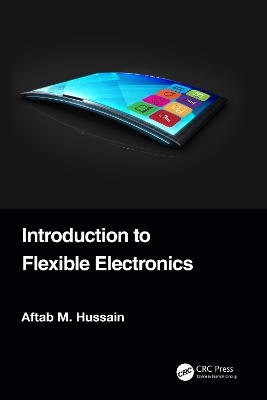
Introduction to Flexible Electronics
CRC Press (Verlag)
978-1-032-15043-7 (ISBN)
The field of flexible electronics has grown rapidly over the last two decades with diverse applications including wearable gadgets and medical equipment. This textbook comprehensively covers the fundamental aspects of flexible electronics along with materials and processing techniques. It discusses topics including flexural rigidity, flexible PCBs, organic semiconductors, nanostructured materials, material reliability, electronic reliability, crystalline and polymer materials, semiconductor processing, and flexible silicon in depth. The text covers advantages, disadvantages, and applications of processes such as sol-gel processing and ink-jet printing. Pedagogical features such as solved problems and unsolved exercises are interspersed throughout the text for better understanding.
FEATURES
Covers major areas such as materials, physics, processes, and applications of flexible electronics
Contains homework problems for readers to understand concepts in an easy manner
Discusses, in detail, various types of materials, such as flexible silicon, metal oxides, and organic semiconductors
Explains the application of flexible electronics in displays, solar cells, and batteries
Includes a section on stretchable electronics
This textbook is primarily written for senior undergraduate and graduate students in electrical engineering, electronics, materials science, chemistry, and communication engineering for a course on flexible electronics. Teaching resources are available, including a solutions manual for instructors.
Aftab is currently an Assistant Professor at International Institute of Information Technology (IIIT) Hyderabad and the Principal Investigator of the PATRIoT Lab. Aftab earned his Bachelor’s degree from IIT Roorkee in 2009, followed by his M.S. and Ph.D. from KAUST in 2016. He was awarded a postdoctoral fellowship at the School of Engineering and Applied Sciences (SEAS) at Harvard University in 2017-2018. Aftab has more than nine years of experience working with device fabrication, thin film characterization and device testing, along with sensor applications in IoT and related areas. His research focus is flexible and stretchable electronics and their applications in various IoT domains such as healthcare, mobility and smart cities. He has more than 80 scientific publications, holds four granted US patents, along with six others in various stages of filing. He is a member of the Executive Committee (ExeCom) of IEEE CAS/EDS joint chapter in Hyderabad and an Associate Editor (Flexible Electronics) at Frontiers of Electronics journal.
Part I: Introduction 1. Introduction 2. Physics of Flexible Electronics 3. Semiconductor Basics Part II: Materials 4. Flexible Silicon 5. Organic Electronic Materials 6. Metal Oxide Semiconductors 7. III-V Semiconductors 8. Nanostructured Materials Part III: Integration Strategies 9. Substrates, Transfer, and Bonding 10. Barriers, Insulators, and Packaging 11. Flexible Printed Circuit Boards 12. Printed Electronics Part IV: Applications 13. Flexible Processors 14. Flexible Memory 15. Flexible Displays 16. Flexible Energy Generation and Storage Devices 17. Flexible Sensors and Actuators Part V: The Road Ahead 18. Stretchable Electronics 19. Reliability and Future Outlook
| Erscheinungsdatum | 06.12.2021 |
|---|---|
| Zusatzinfo | 1 Tables, black and white; 97 Line drawings, black and white; 23 Halftones, black and white; 120 Illustrations, black and white |
| Verlagsort | London |
| Sprache | englisch |
| Maße | 156 x 234 mm |
| Gewicht | 580 g |
| Themenwelt | Technik ► Elektrotechnik / Energietechnik |
| ISBN-10 | 1-032-15043-2 / 1032150432 |
| ISBN-13 | 978-1-032-15043-7 / 9781032150437 |
| Zustand | Neuware |
| Informationen gemäß Produktsicherheitsverordnung (GPSR) | |
| Haben Sie eine Frage zum Produkt? |
aus dem Bereich


